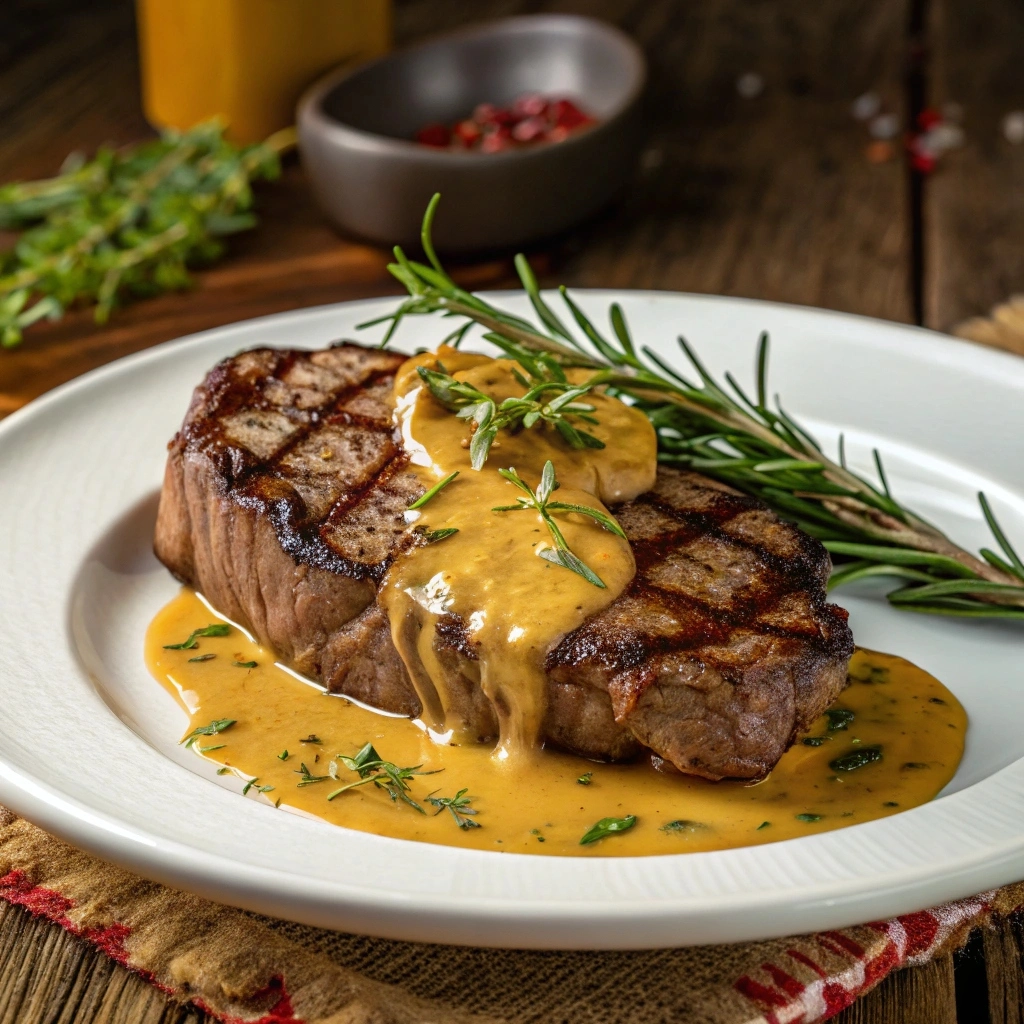Steak night just isn’t the same without that irresistible drizzle of rich, savory goodness—and that’s where zip sauce recipe comes in. In this guide, you’ll learn everything there is to know about crafting the perfect zip sauce recipe, right in your own kitchen. From its humble origins in Detroit to tips on pairing, variations, and storing—it’s all covered here.
We’ll kick things off by diving into what exactly this beloved sauce is and why it’s become a go-to for steak lovers and foodies alike. After that, we’ll walk you through the ingredients, a foolproof step-by-step process, flavor-packed customizations, and much more.
So, grab a whisk and let’s zip into the world of this bold, buttery sauce!
Table of Contents
Introduction to Zip Sauc
What is Zip Sauce Recipe?
Ever heard someone rave about the sauce that “makes the steak”? That’s probably Zip Sauce Recipe. This rich, buttery blend—often infused with garlic, Worcestershire, and a splash of beef broth—is the unsung hero of a juicy steak dinner. But it doesn’t stop there. Zip Sauce Recipe can turn just about any dish into something mouthwateringly memorable.
Although it’s often called a steak sauce, it’s way more versatile than that. It’s silky, savory, and clings beautifully to anything from grilled meats to roasted veggies. That combo of umami, spice, and smooth richness? Absolute magic on a plate.
The Origins: Detroit’s Culinary Gem
The zip sauce recipe got its start in Detroit’s classic steakhouses, especially at places like Lelli’s and Andiamo. Back in the mid-20th century, chefs were already experimenting with ways to elevate steak beyond basic butter and salt. Enter: Zip Sauce Recipe. It became iconic almost overnight—and for good reason.
It’s Detroit’s gift to the culinary world, and honestly? We should all be thanking Michigan.
Why Zip Sauce is a Must-Try for Steak Lovers
Let’s face it—steak is amazing, but even the best cut can use a little extra zing. That’s where this sauce comes in. Zip sauce adds layers of flavor—salty, tangy, buttery goodness that seeps into each bite. It’s not just about taste; it’s about texture and aroma too.
Moreover, unlike bottled steak sauces that can be overly sweet or overpowering, this one complements without taking over. As a result, it enhances rather than masks the natural flavors of your dish.
In short? If you haven’t tried making a zip sauce recipe at home yet, you’re seriously missing out.
Essential Ingredients for an Authentic Zip Sauce Recipe
Core Components: Butter, Garlic, and Worcestershire Sauce
To whip up an unforgettable zip sauce recipe, it all starts with a few basic—but powerful—ingredients. Each one plays a crucial role in delivering that rich, savory kick that defines this beloved Detroit-born sauce. While the recipe is simple, the balance of flavors makes all the difference.
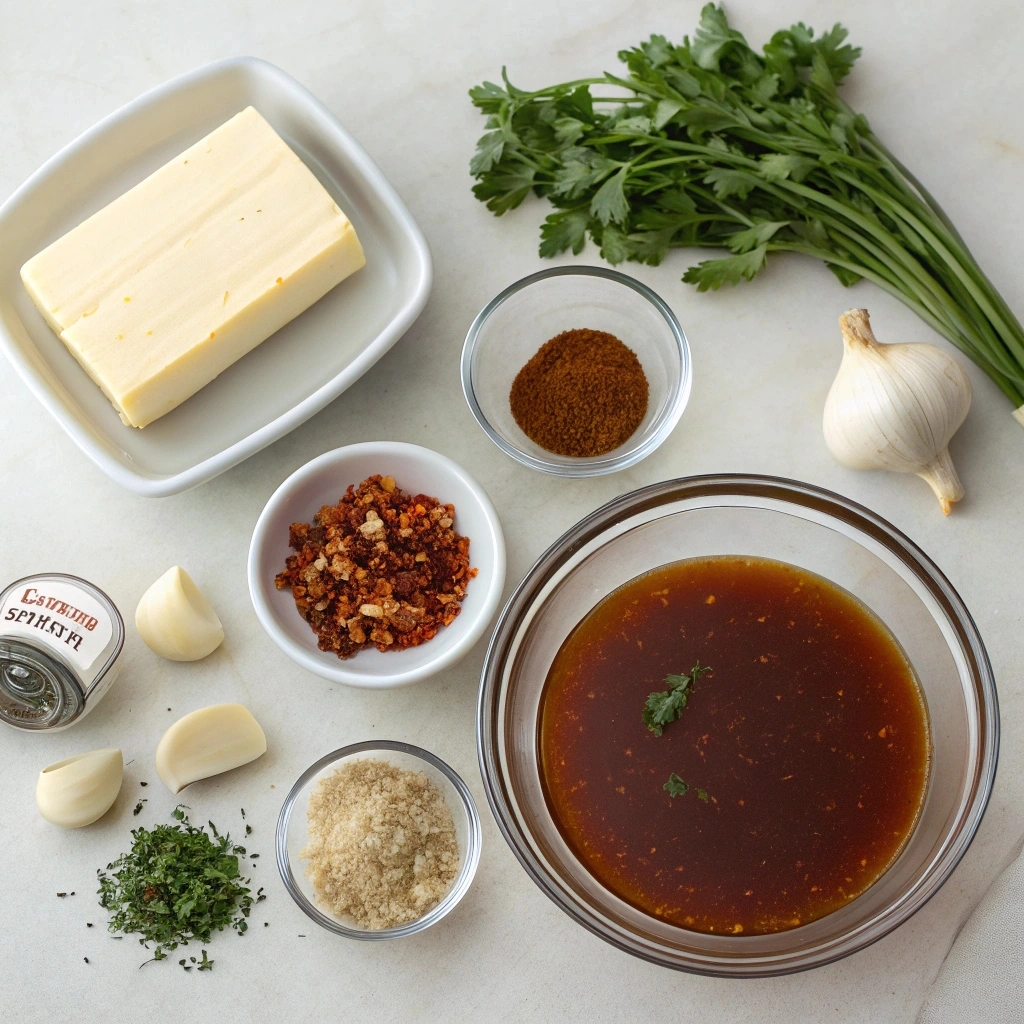
Here’s a handy table listing the ingredients and their ideal quantities:
| Ingredient | Quantity |
|---|---|
| Unsalted butter | ½ cup (1 stick) |
| Minced garlic | 2 cloves |
| Worcestershire sauce | 2 tablespoons |
| Beef broth (or stock) | ¼ cup |
| Soy sauce (optional) | 1 teaspoon |
| Crushed black pepper | ½ teaspoon |
| Salt | ¼ teaspoon (or to taste) |
| Dried parsley (optional) | 1 teaspoon |
| Red pepper flakes (optional) | ¼ teaspoon |
Optional Add-ins: Herbs, Spices, and Broth Variations
While the core ingredients bring the sauce to life, optional add-ins let you tailor the zip sauce recipe to your tastes. For example, using a splash of soy sauce can deepen the umami flavor, while red pepper flakes bring a touch of heat. Moreover, swapping beef broth for vegetable broth can create a vegetarian-friendly version.
Adding fresh herbs like rosemary or thyme, though not traditional, offers a fragrant twist. Therefore, don’t be afraid to experiment and make the sauce your own.
Ingredient Substitutions for Dietary Preferences
Need a dairy-free or low-sodium option? No problem. You can use plant-based butter and low-sodium broth to keep the flavor intact. Additionally, coconut aminos work well as a soy sauce alternative if you’re avoiding soy.
In short, the zip sauce recipe is flexible, flavorful, and easy to adapt to your dietary needs—without sacrificing taste.
Step-by-Step Guide to Crafting the Perfect Zip Sauce
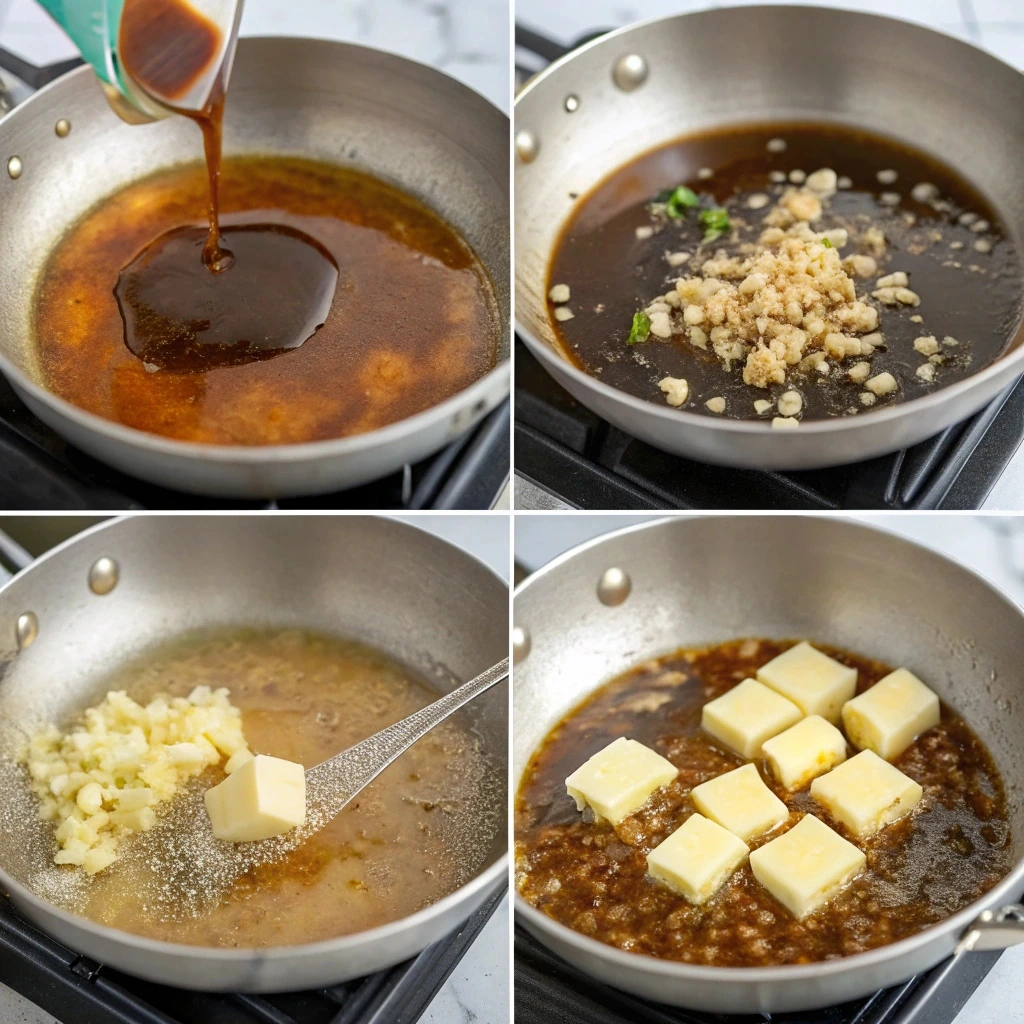
Preparation Tips: Mise en Place for Efficiency
Before you start cooking, it’s smart to get organized. Therefore, gather all your ingredients and prep them in advance. Mince your garlic, measure your sauces, and cut your butter into chunks. This simple habit—called mise en place—saves time and helps you avoid missing any key steps.
In addition, use a small saucepan for best results. It gives you more control over heat and consistency, which is key for making a smooth, flavorful sauce.
Cooking Process: From Sautéing to Simmering
Let’s get to the good stuff. Here’s how to make this mouthwatering zip sauce recipe:
- Melt the butter
Start by melting your butter in a saucepan over medium-low heat. Stir gently so it doesn’t brown or burn. - Sauté the garlic
Add the minced garlic and cook it for about 1 minute, just until it’s fragrant. However, avoid letting it turn brown, as that can make the sauce bitter. - Add Worcestershire and broth
Pour in the Worcestershire sauce and beef broth. Stir well to combine everything evenly. - Season and simmer
Next, add your black pepper, salt, and any optional spices like red pepper flakes. Let it simmer for 5–7 minutes, allowing the flavors to meld. - Adjust thickness
If the sauce feels too thin, let it simmer a little longer. On the other hand, if it’s too thick, add a splash more broth. - Finish with herbs
Finally, stir in the dried parsley or any fresh herbs you’re using, then take it off the heat.
Achieving the Ideal Consistency and Flavor Balance
The perfect zip sauce should be smooth, velvety, and bold in flavor. However, getting the consistency right takes just a bit of patience. Therefore, let it reduce slowly rather than turning up the heat too high.
For a creamier texture, some people add a splash of cream or a pat of cold butter at the end. This not only softens the edges of the sauce but also boosts richness—without overpowering the core flavors.
As a result, you’ll end up with a balanced, irresistible sauce that takes any dish up a notch.
Variations and Customizations of the Zip Sauce Recipe
Spicy Zip Sauce: Adding Heat with Peppers
If you’re a fan of bold flavors, turning up the heat in your zip sauce recipe is a great idea. Incorporating ingredients like red pepper flakes, cayenne pepper, or even a dash of hot sauce can add a fiery kick. For example, adding ¼ teaspoon of red pepper flakes will introduce a subtle heat, while a full teaspoon of cayenne pepper will make the sauce noticeably spicier. However, it’s essential to add these spices gradually and taste as you go to achieve your desired level of spiciness.
Creamy Zip Sauce: Incorporating Dairy for Richness
For a richer, more indulgent version, consider making a creamy zip sauce. By adding a splash of heavy cream or a dollop of sour cream, you can create a velvety texture that complements the sauce’s savory notes. This variation pairs exceptionally well with grilled chicken or roasted vegetables, offering a luxurious twist to the classic recipe. Moreover, incorporating dairy can help mellow out the sauce’s acidity, resulting in a more balanced flavor profile.
Herb-Infused Versions: Elevating Flavor Profiles
Introducing fresh herbs can elevate your zip sauce recipe to new heights. Chopped parsley, thyme, or rosemary can add a burst of freshness and complexity. For instance, stirring in a tablespoon of finely chopped parsley at the end of cooking can brighten the sauce, while a sprig of rosemary simmered with the sauce imparts a subtle, earthy aroma. These herb-infused variations not only enhance the flavor but also add visual appeal to your dishes.
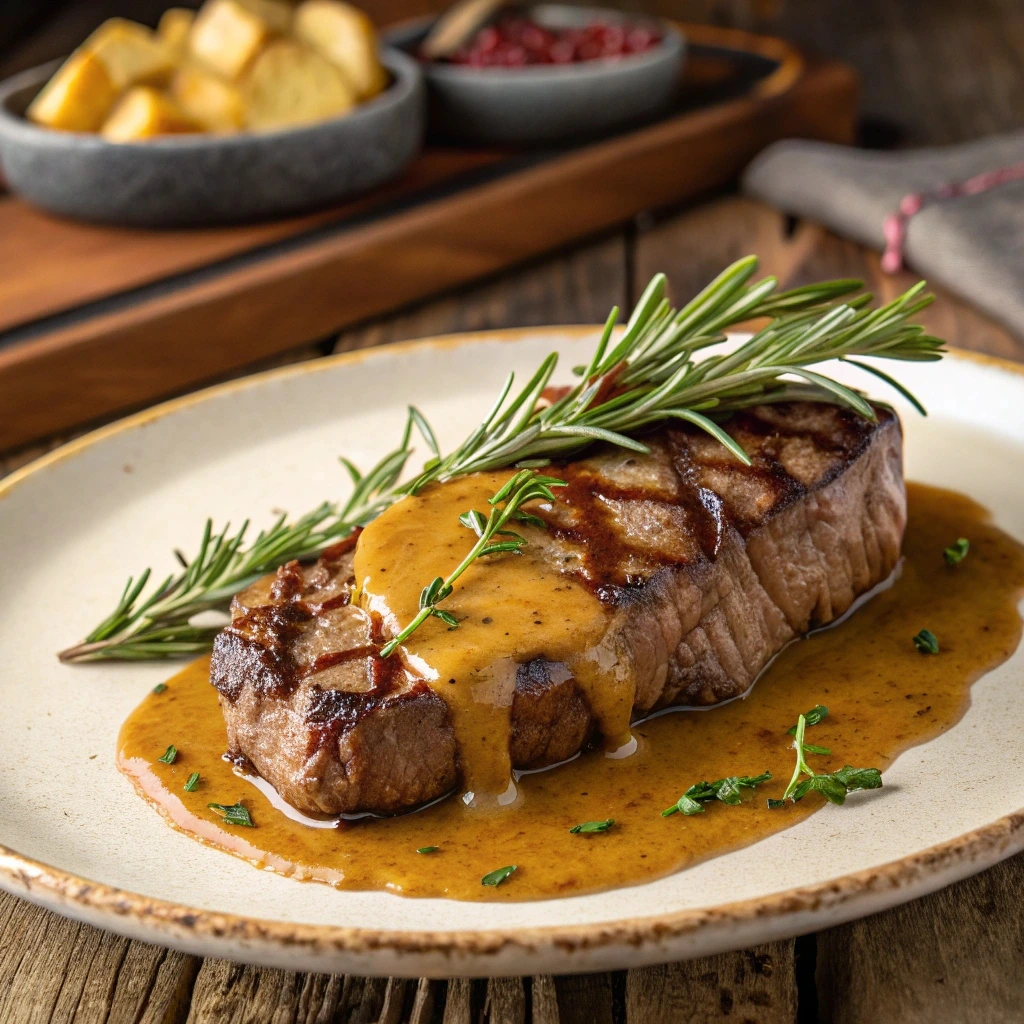
Pairing Zip Sauce with Various Dishes
Classic Pairings: Steak, Roast Beef, and Lamb
Traditionally, zip sauce is a staple accompaniment for grilled or pan-seared steaks, roast beef, and lamb chops. The sauce’s rich, buttery flavor complements the savory notes of these meats, enhancing their natural taste. For example, drizzling zip sauce over a perfectly cooked ribeye can elevate the dish, making it restaurant-quality. Similarly, serving it alongside roast beef or lamb adds depth and moisture, transforming a simple meal into a gourmet experience.
Beyond Meat: Vegetables, Pasta, and Seafood
While zip sauce is renowned for pairing with meats, its versatility extends to various other dishes. For instance, tossing roasted vegetables like asparagus or Brussels sprouts in zip sauce can add a savory richness that complements their natural flavors. Similarly, incorporating the sauce into pasta dishes, such as fettuccine or penne, creates a creamy, flavorful coating that enhances the overall dish. Moreover, drizzling zip sauce over grilled seafood, like shrimp or scallops, introduces a delightful contrast between the sauce’s richness and the seafood’s lightness.
Creative Uses: Sandwiches, Burgers, and More
Thinking outside the box, zip sauce can be a game-changer for sandwiches and burgers. Spreading it on a roast beef sandwich adds a gourmet touch, while incorporating it into a burger elevates the flavor profile, making each bite more indulgent. Additionally, using zip sauce as a dipping sauce for fries or as a base for flatbreads introduces a new dimension to these dishes, showcasing the sauce’s adaptability.
For more delicious recipes, check out our recipe article on Popin Recipes.
Storage Tips and Reheating Methods for Zip Sauce
Best Practices for Refrigeration and Freezing
Once you’ve made a delicious batch of zip sauce, you might wonder how to store the leftovers. Thankfully, it keeps quite well with a few simple tips. After cooling to room temperature, store your sauce in an airtight glass jar or container. It will last in the refrigerator for up to 5 days.
For longer storage, freezing is an option. Pour the sauce into a freezer-safe container, leaving a bit of room at the top since the sauce will expand. Frozen zip sauce can stay good for up to 2 months. However, keep in mind that butter-based sauces can slightly separate after freezing. To prevent this, stir well when reheating.
In addition, freezing in small batches using an ice cube tray is a smart idea. This way, you can thaw just the amount you need, without wasting any.
Reheating Without Losing Flavor or Texture
When it comes time to reheat your zip sauce, slow and steady wins the race. Use a small saucepan over low heat and stir frequently. This helps the butter and broth blend smoothly again, maintaining that creamy texture.
Microwaving is also an option, but do so in short bursts—15 seconds at a time—stirring in between. Otherwise, the sauce might split or become oily. To restore any lost creaminess, add a small pat of butter or a teaspoon of broth as you warm it up.
Therefore, whether you’re using it right away or saving some for later, your zip sauce recipe will stay just as flavorful with the right storage and reheating steps.
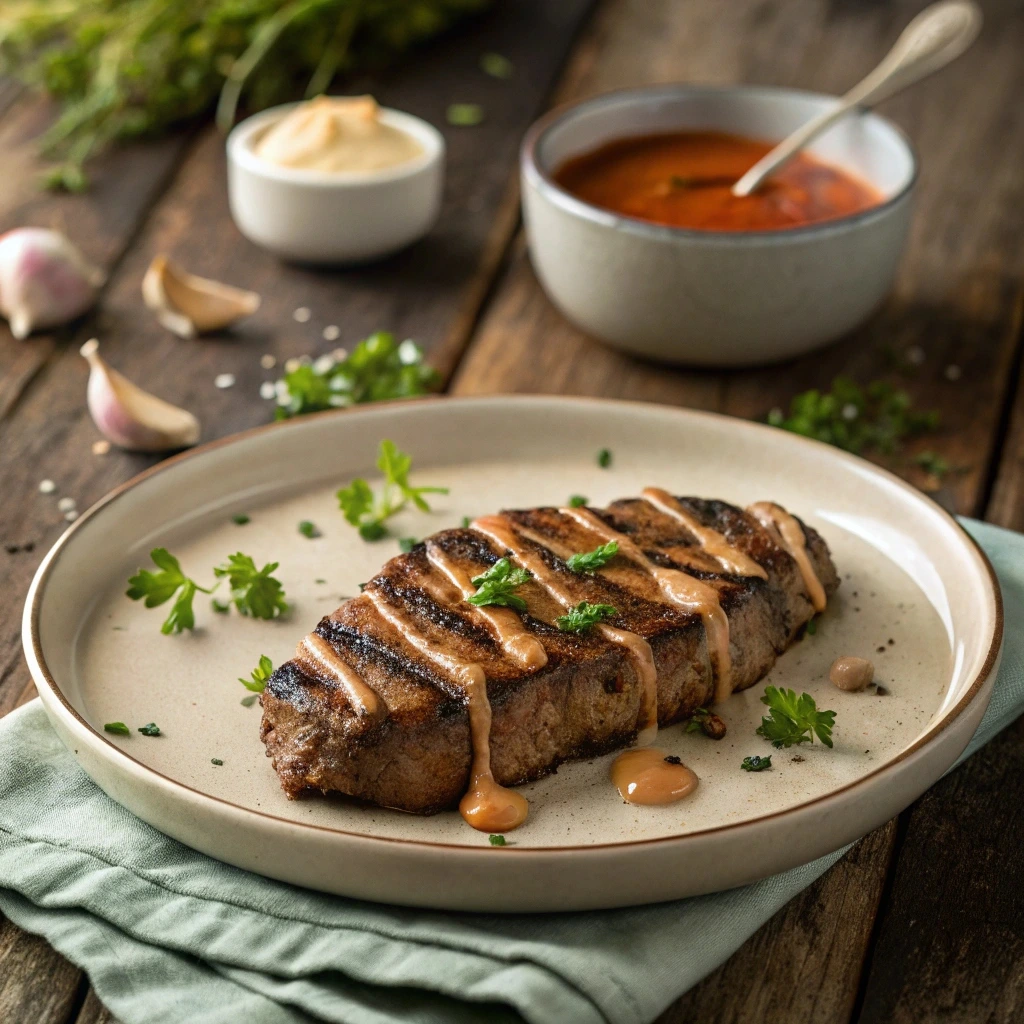
Common Mistakes to Avoid When Making Zip Sauce
Overheating Butter and Burning Garlic
One of the most common slip-ups in any zip sauce recipe is overheating the butter. When butter gets too hot, it starts to brown quickly—and while browned butter has its place, it can overpower the balanced flavor of zip sauce. So, always melt your butter over medium-low heat and keep a close eye on it.
The same goes for garlic. It’s easy to burn, especially if added to hot butter. Burnt garlic tastes bitter and can ruin the whole batch. Therefore, sauté it just until it becomes fragrant—no more than 30 to 60 seconds.
Skipping the Simmering Step or Rushing the Process
Another major mistake is skipping the simmering process. Simmering allows the flavors to marry and the sauce to thicken slightly. If you rush this step, the sauce might taste flat or watery.
Moreover, it’s tempting to crank up the heat to speed things up—but doing so can break the emulsion or cause the sauce to reduce too fast. As a result, you might lose that smooth, velvety finish.
Patience is key. Let the sauce simmer gently and taste it as you go. In addition, don’t forget to adjust seasoning at the end to match your preferences.
By avoiding these common mistakes, your zip sauce recipe will turn out consistently delicious, whether you’re using it for steak night or to spice up a veggie dish.
Health and Nutrition Insights of Zip Sauce
Caloric Content and Fat Profile
When enjoying a tasty zip sauce recipe, it’s helpful to know what’s in it. Since butter is the base, this sauce is naturally high in fat—especially saturated fat. On average, two tablespoons of zip sauce contain around 120–150 calories and 14 grams of fat. That might sound like a lot, but keep in mind that this sauce is meant to be used sparingly.
However, if you’re watching your fat intake, there are simple ways to lighten it up. For example, you can swap out half of the butter for olive oil or a plant-based alternative. Doing so reduces saturated fat without sacrificing too much flavor.
Making a Lighter or Healthier Version
There’s no need to give up your favorite zip sauce recipe just because you’re aiming for healthier meals. Therefore, try reducing the butter, skipping added salt, or using low-sodium broth. You can also stir in Greek yogurt or plant-based cream near the end for a creamy finish without the heavy fat load.
In addition, adding fresh herbs like parsley or basil not only boosts flavor but also introduces antioxidants. As a result, your sauce remains rich, flavorful, and a little easier on the waistline.
FAQs About the Zip Sauce Recipe
What is zip sauce made of?
Zip sauce is a rich, buttery blend of Worcestershire sauce, beef broth, garlic, and black pepper. The traditional zip sauce recipe uses butter as its base, but variations may include soy sauce, red pepper flakes, or herbs to enhance the flavor.
Can I make zip sauce without beef broth?
Absolutely! While beef broth adds a deep umami flavor, you can substitute it with vegetable broth for a vegetarian-friendly option. In fact, some cooks even use mushroom broth to keep the savory notes intact.
How long does zip sauce last in the fridge?
When stored in a sealed container, zip sauce can stay fresh in the fridge for about 4 to 5 days. However, always check the smell and texture before reheating. If it looks or smells off, it’s best to make a fresh batch.
Can I freeze zip sauce?
Yes, freezing is a great way to store leftovers. Pour the cooled sauce into a freezer-safe container or ice cube tray. Then, freeze it for up to 2 months. When reheating, stir gently to restore its smooth texture.
What dishes pair well with zip sauce?
Zip sauce is famous for pairing with steak, but that’s just the start. It also works wonders on roast beef, burgers, grilled veggies, pasta, and even seafood. Its buttery, umami-rich flavor brings out the best in many dishes.

